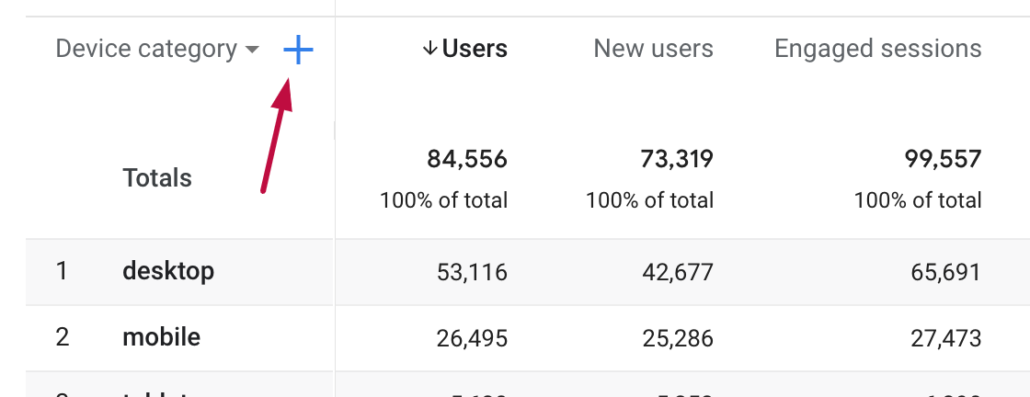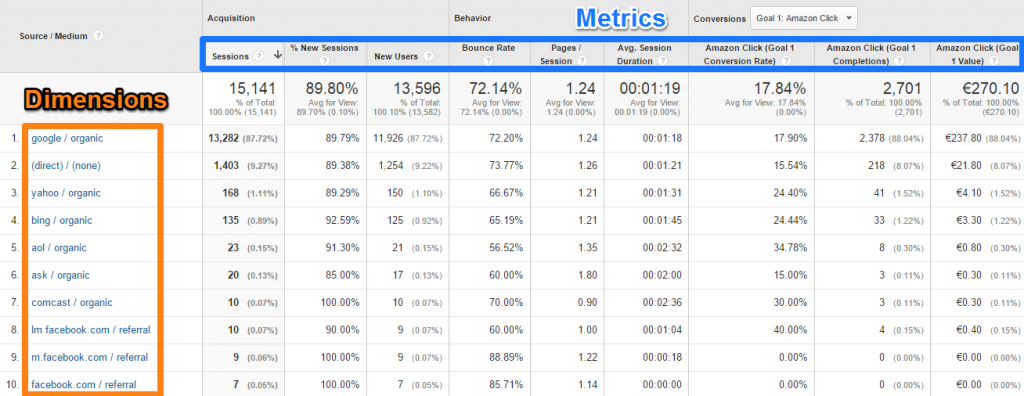Enhance Your Information Analysis Utilizing Additional Dimension in Google Analytics
Discovering the capacities of secondary measurements in Google Analytics opens a realm of opportunities for refining data evaluation. By layering extra measurements onto primary information collections, an even more complex narrative emerges, losing light on customer interactions and performance signs.
Comprehending Secondary Dimensions
In the realm of information analysis, a critical facet to grasp is the principle of second measurements and their importance in removing much deeper insights from Google Analytics records. Second measurements in Google Analytics refer to added criteria that can be included in the main dimension, allowing for a much more in-depth evaluation of information. By incorporating additional dimensions, analysts can sector and filter data to reveal patterns, patterns, and connections that might not appear when looking at the data overall. These secondary dimensions can supply context and a more extensive understanding of customer actions, web traffic sources, and other crucial metrics tracked by Google Analytics.

Advantages of Utilizing Additional Dimensions
When evaluating data in Google Analytics, the utilization of second dimensions supplies vital understandings into individual habits and efficiency metrics. By including a second measurement to your primary information, you can dig deeper into the characteristics of your website site visitors and their communications.
Furthermore, second measurements enhance the context of your main information, providing a more extensive view of individual interaction and efficiency metrics. Overall, the use of additional measurements in Google Analytics can considerably improve the depth and high quality of your data analysis, leading to even more enlightened decision-making and improved outcomes.
How to Include Additional Measurements
By including second dimensions in Google Analytics, users can acquire deeper understandings into their data evaluation process, permitting for even more thorough assessment of user behavior and efficiency metrics. Adding additional dimensions is a straightforward procedure that can considerably improve the depth of evaluation. Once in the report, locate the "Second measurement" tab above the data table.
Studying Information With Additional Measurements
Utilizing second dimensions in data evaluation gives an extra comprehensive understanding of individual behavior and efficiency metrics. By including a second dimension to your primary information set in Google Analytics, you can delve much deeper right into the attributes of your site site visitors and their interactions. For instance, incorporating the key dimension of 'source/medium' with the secondary measurement of 'landing page' can reveal which certain pages are bring in website traffic from different sources, helping you optimize these web pages for much better interaction.

Fundamentally, assessing information with secondary measurements encourages you to acquire useful insights into customer behavior, recognize patterns, and make educated decisions to improve the performance of your digital properties.
Ideal Practices for Second Measurements
In data analysis, integrating secondary dimensions successfully can significantly boost the deepness of insights stemmed from metrics and individual behavior patterns. When utilizing second dimensions in Google Analytics or any kind of other analytical tool, it is important to stick to finest practices to guarantee the precision and importance of the data evaluation.
One secret best technique is to carefully pick additional measurements that match the main dimension being evaluated. Choosing additional dimensions that offer extra context or more segmentation can offer a much more extensive understanding of the data. It is also necessary to stay clear of overcomplicating the analysis by consisting of way too many second measurements, which might lead to confusion or dilution of insights.
In addition, it is advisable to trying out different combinations of primary and additional dimensions to uncover brand-new correlations and Full Article trends. On a regular basis refining the selection and evaluating of second dimensions based on the specific objectives of the analysis can bring about even more actionable insights. By complying with these best practices, information analysts can leverage second measurements efficiently to improve the overall information evaluation procedure and decision-making capacities.

Conclusion
To conclude, including second measurements in Google Analytics is crucial for a thorough data evaluation approach. By leveraging additional dimensions together with primary ones, marketers and analysts can uncover valuable understandings and connections that can inform decision-making and maximize electronic advertising and marketing techniques. Recognizing exactly how to effectively use second dimensions and complying with best click this site methods will permit professionals to draw out meaningful information and improve their general performance metrics.
Additional measurements in Google Analytics refer to additional parameters that can be included to the primary measurement, permitting for an extra thorough analysis of information. By including additional dimensions, experts can segment and filter information to reveal patterns, patterns, and relationships that may not be evident when looking at the information as a whole. Integrating the primary dimension of 'source/medium' with the second measurement of 'landing web page' can disclose which specific web pages are attracting website traffic from different sources, assisting you maximize these pages for far better engagement.
One secret finest practice is to meticulously pick additional dimensions that match the key measurement being examined. By complying with these ideal methods, data analysts can leverage additional dimensions properly to boost the total data evaluation procedure and decision-making capacities.